|
Click on
pictures to enlarge
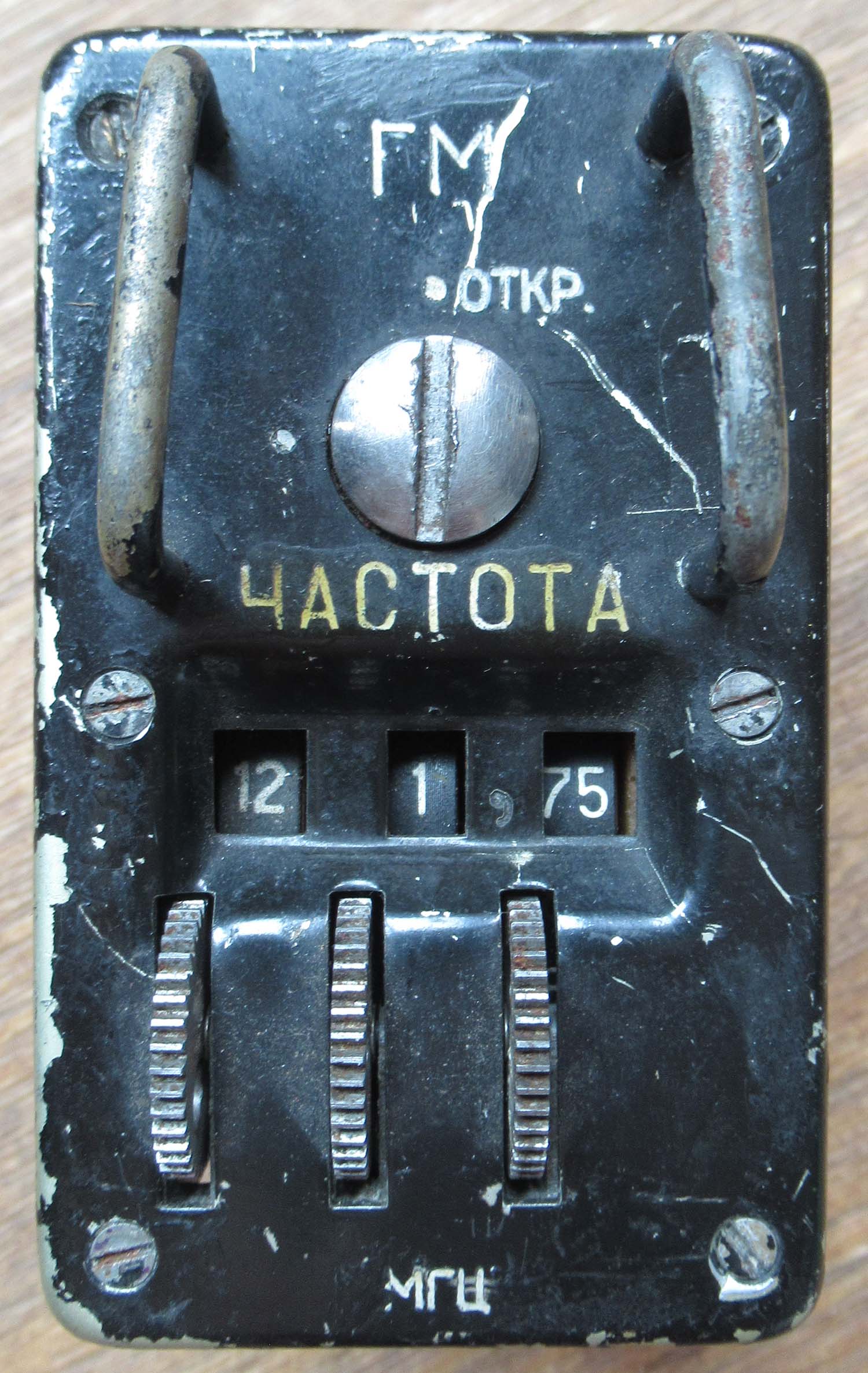
£45


|
Russian
Frequency Tuner RS R619 (No 24 Pg 2 Rad)
Here we have a Russian frequency
tuner found in an antique shop in Wells Somerset, of all
places, with some other aircraft parts. Had a little trouble
finding information on it as might be expected but it looks
to be part of a ground transmitting set. An interesting
piece.
Click on
pictures to enlarge
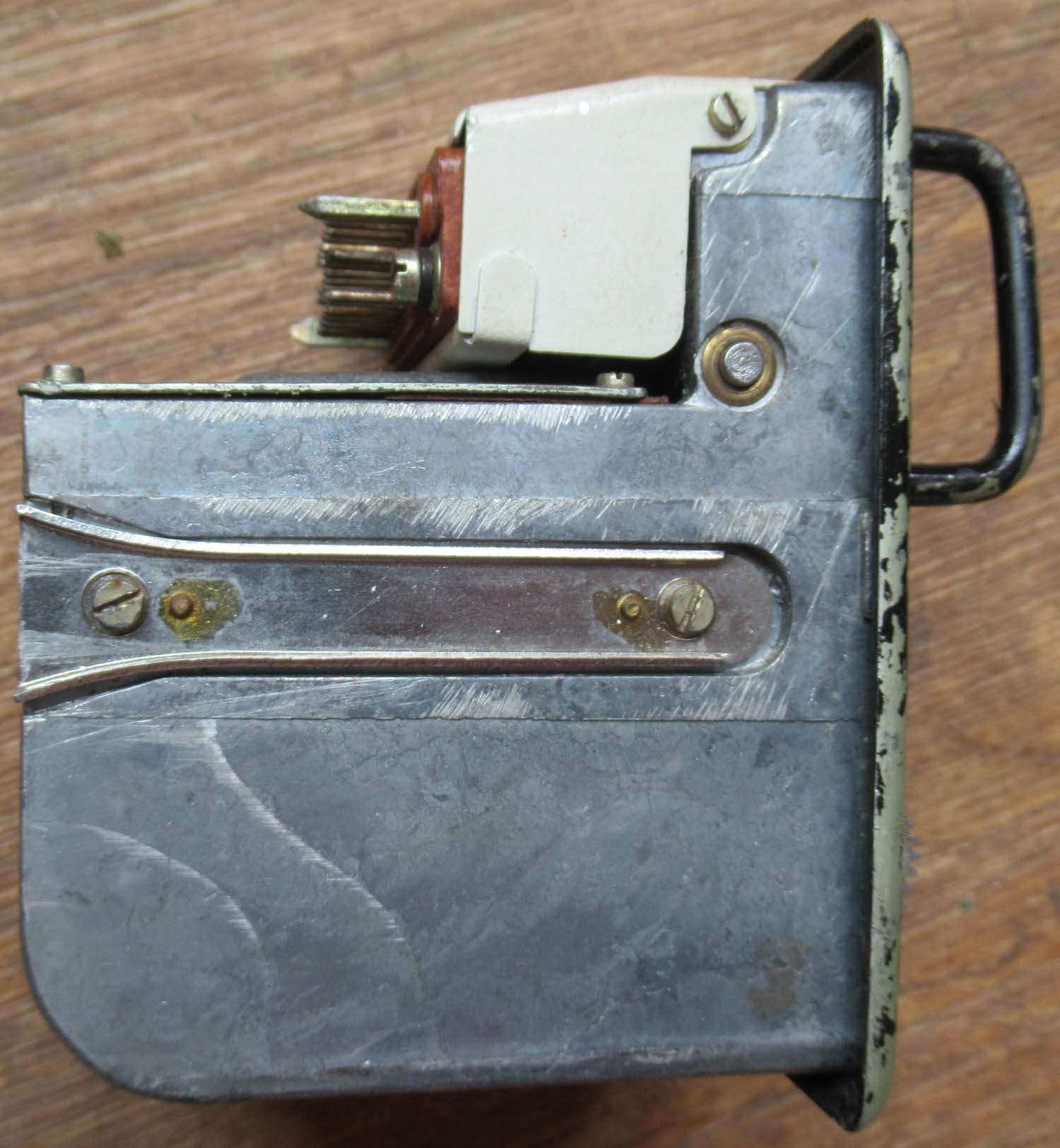
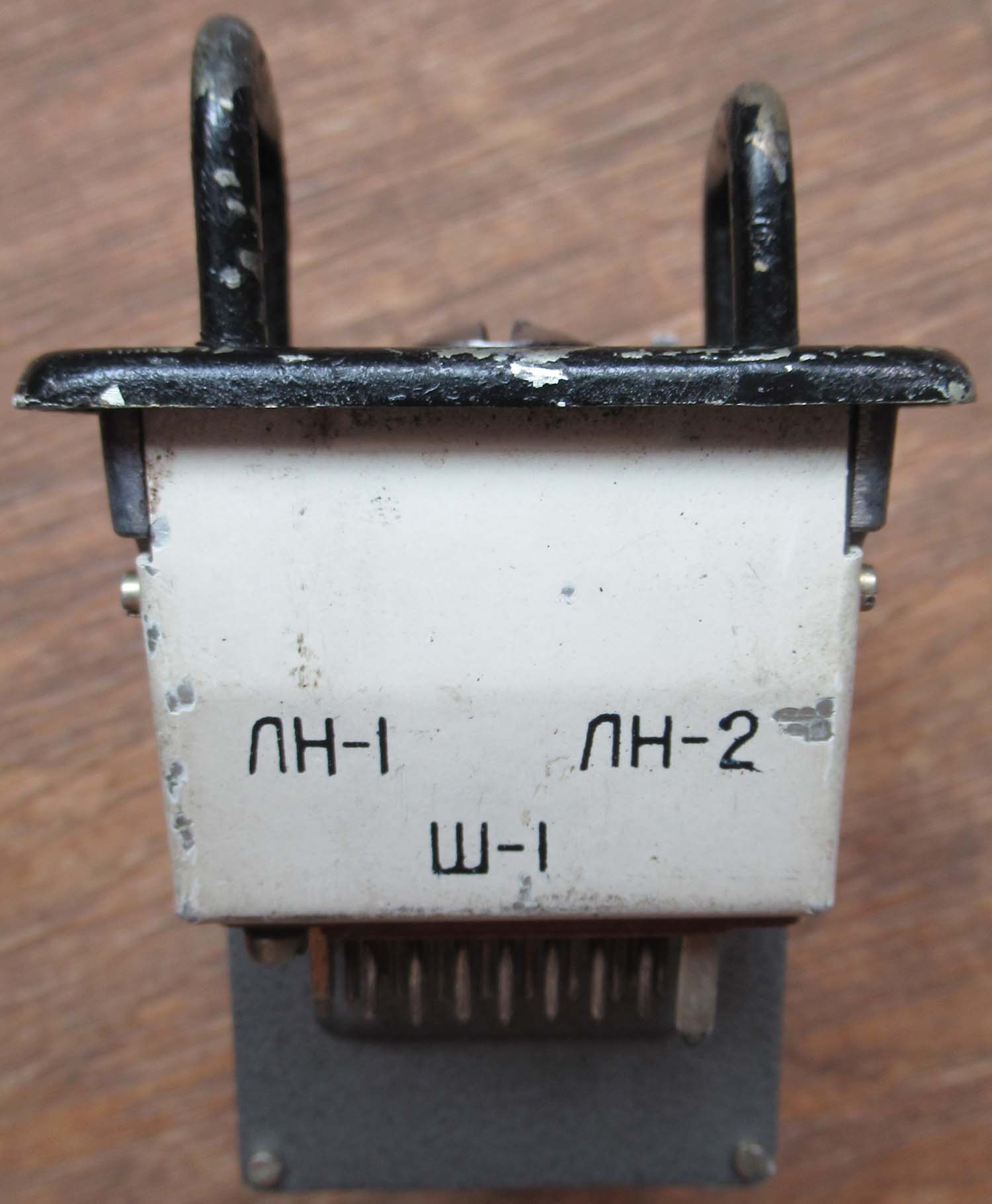

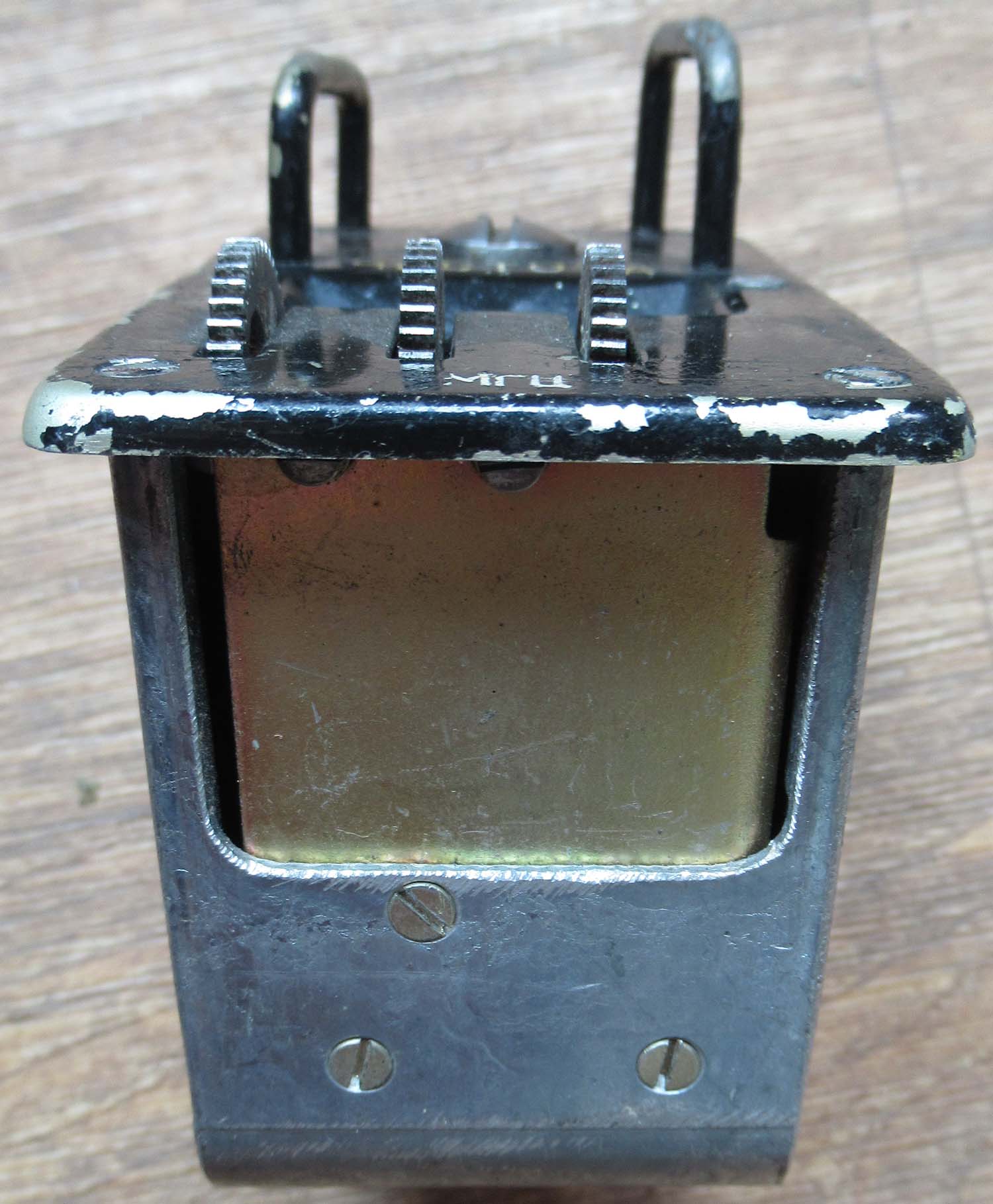
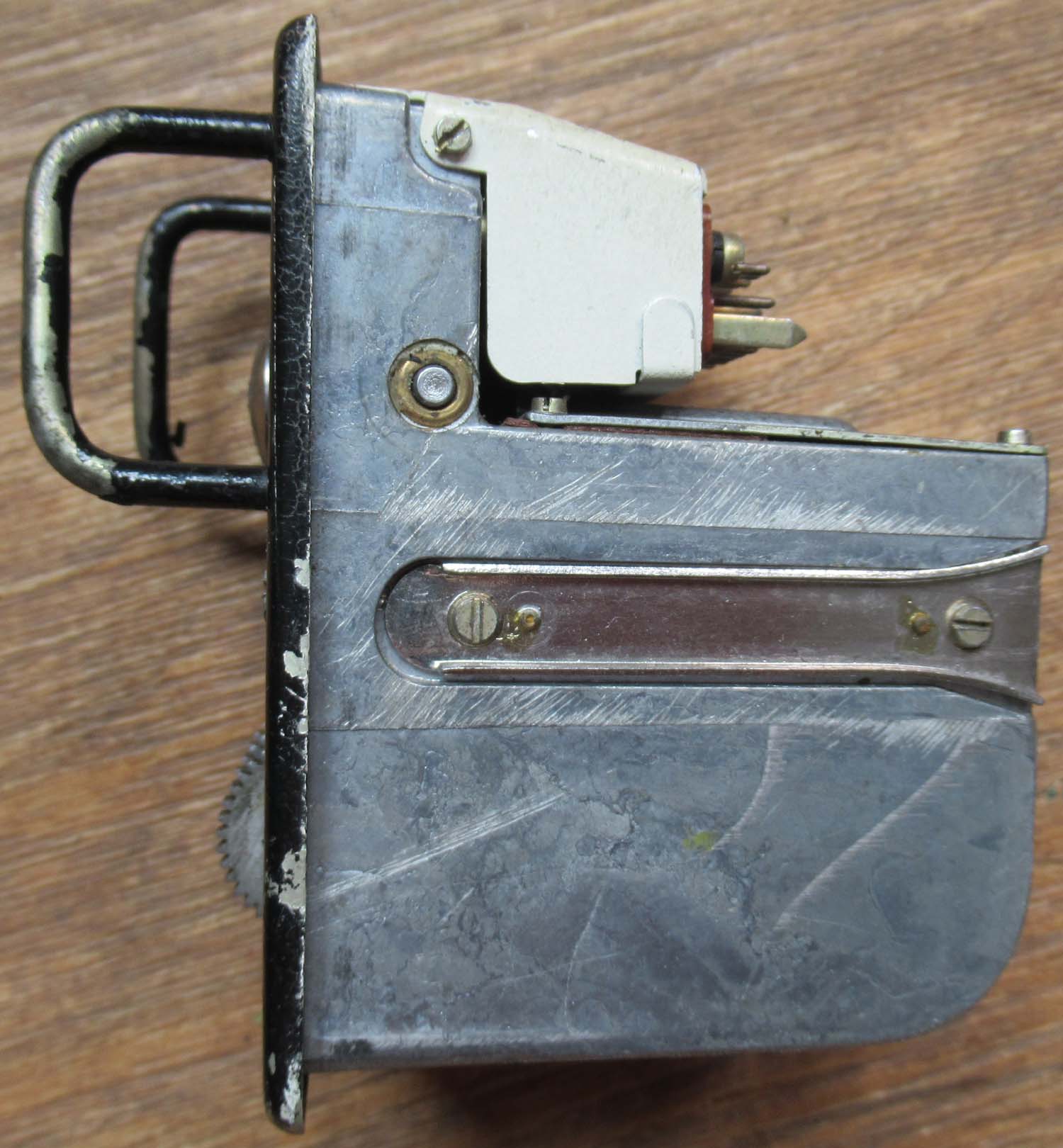
Example of below:
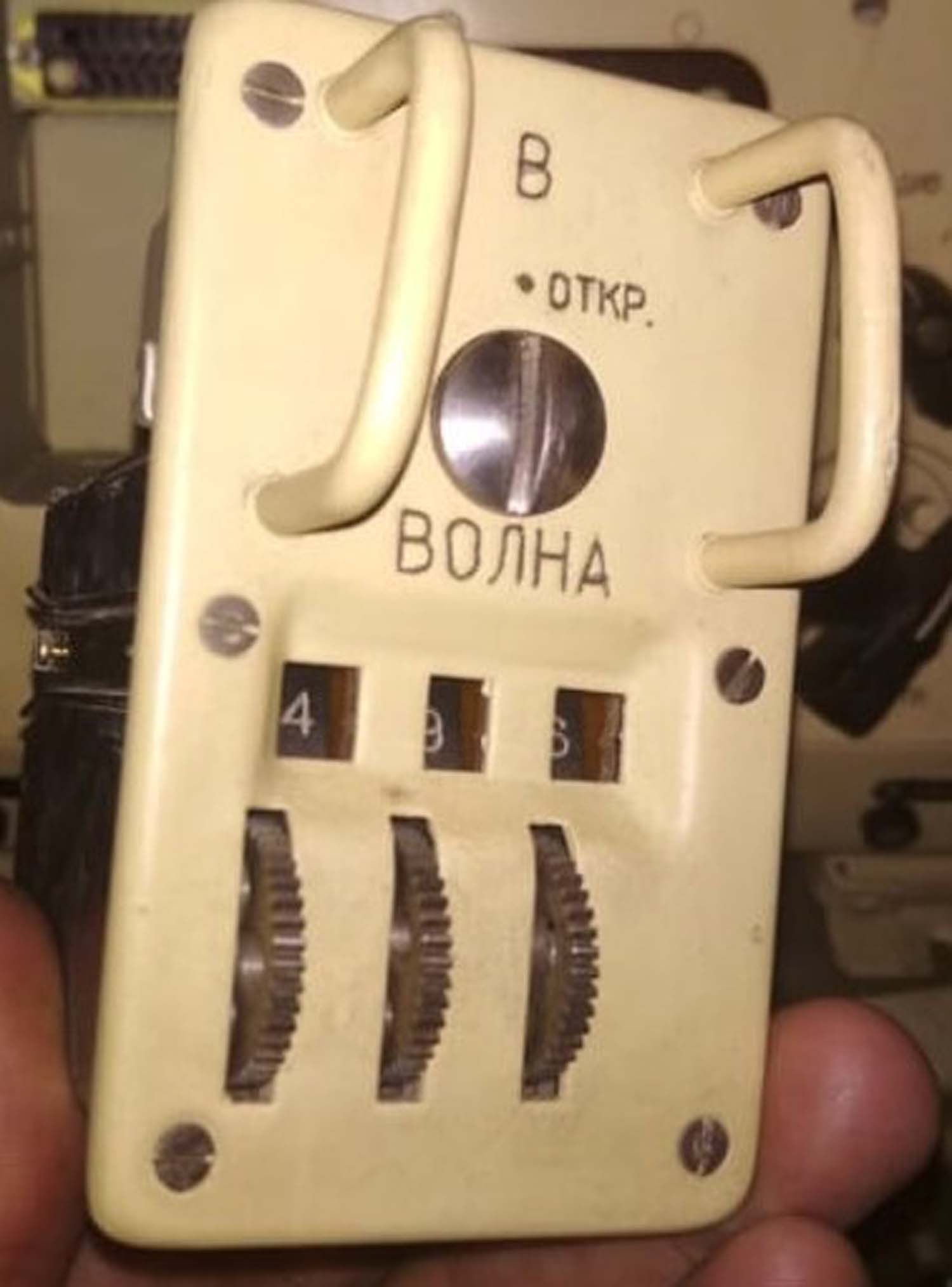
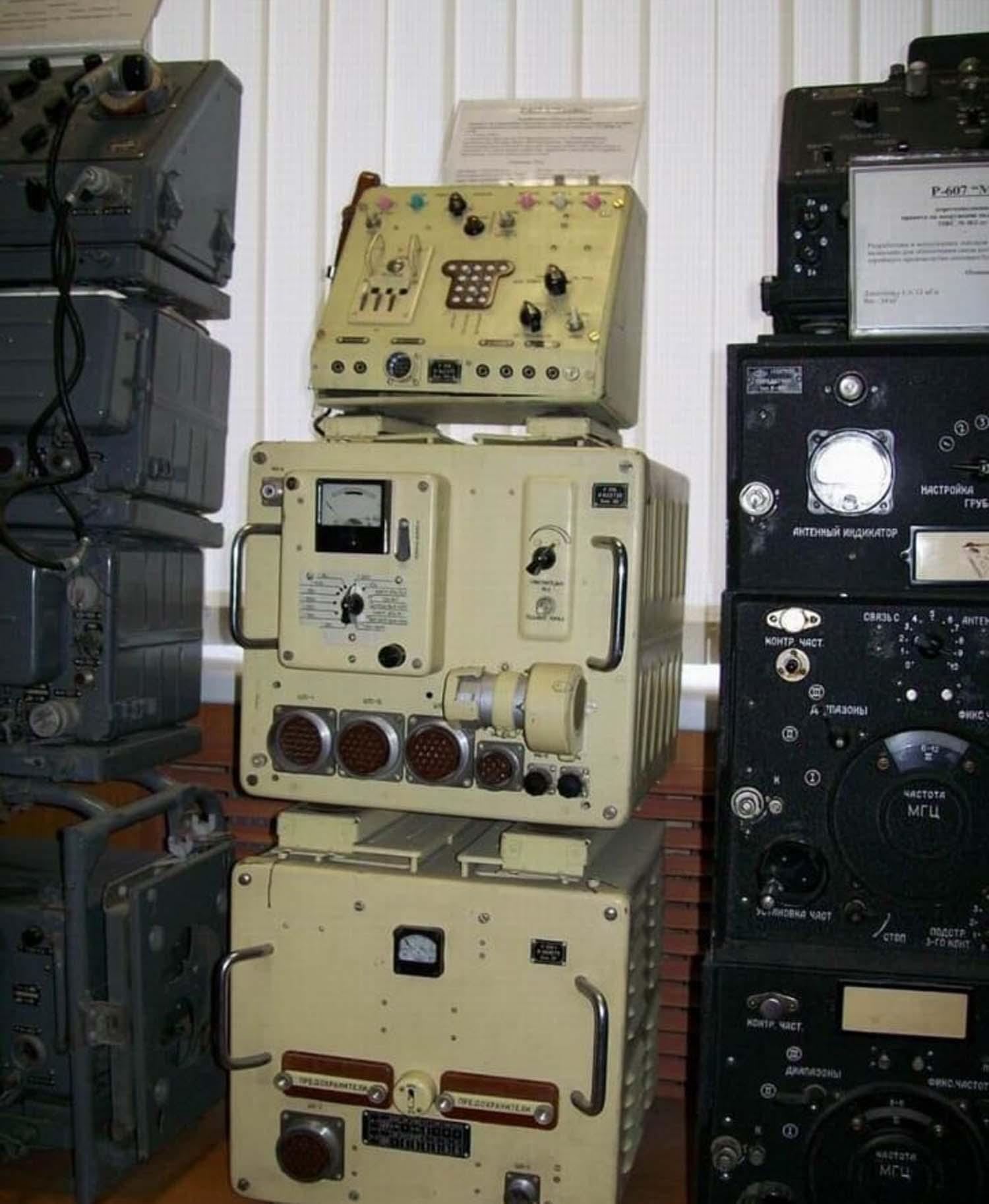
|
|
Click on
pictures to enlarge
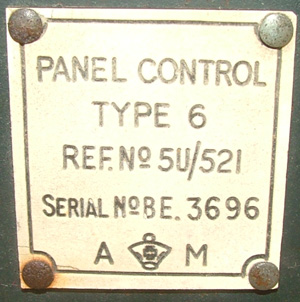
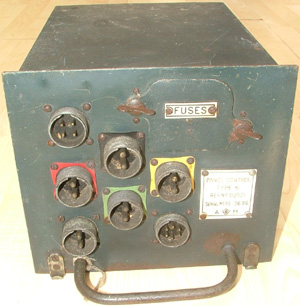
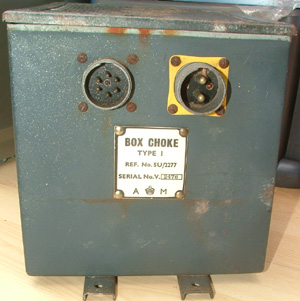
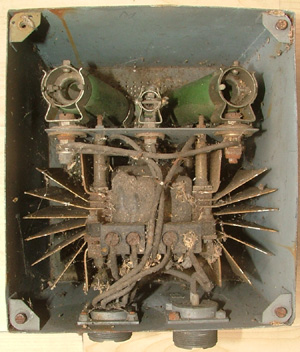
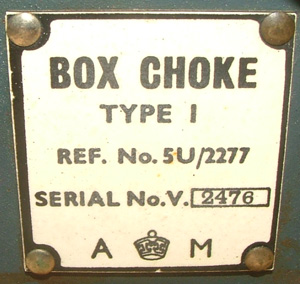
|
GEE & H2S Radar Choke
Box & Control Panel
(No 23 Pg 2 Rad)
Superb original Wartime power unit and
choke as connected to H2S and GEE in the
Lancaster's Halifax and the Sterling.
Internally complete and original.
Below extract from an
AP manual
Click on
pictures to enlarge

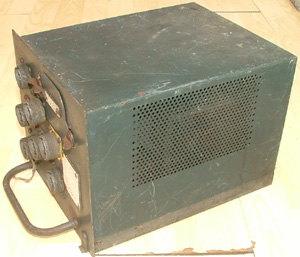
The
picture below is a set up just for GEE the, above set
is for GEE and H2S
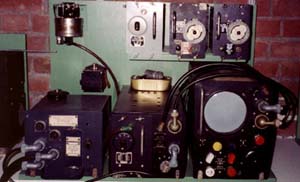
H2S’ became available in January 1943
and was regarded at the time as astonishingly advanced. Kept
top-secret for as long as possible, large bulges began
appearing under the bellies of some heavy bombers. Inside
was a rotating parabolic dish which mapped the ground
beneath, even through cloud, onto a screen in the aircraft.
The fairly blurred picture on the screen differentiated
between dark areas for sea, bright areas for land and very
bright for built up areas. It worked best on coastal targets
or those with a broad river or lake nearby. At first, the
new H2S sets were installed only in Pathfinder aircraft who
flew ahead of other bombers to accurately mark the target
with coloured flares.
The first major development in navigational technology was
‘GEE’,
a system perfected in early 1942. An on-board set received
synchronised radio signals transmitted from ground stations
in different locations in England. Two signals gave the
navigator a ‘fix’ so he could work out his aircraft’s
position on the route to the target at any time.
When flying near the ground stations over home territory,
GEE’s accuracy was good; At increasing distances,
particularly into Germany, accuracy was reduced. However,
with a range of about 300 miles, GEE at least ensured that
each bomber crew entered enemy territory with reasonable
confidence as to their position. After a time, the Germans
worked out a way to jam the system (i.e. interrupt the radio
signals from England). British scientists were forced to
develop new GEE systems, new frequencies and jamming of
their own.
GEE and H2S Radar
Choke box and Control panel
£750


Overseas buyers please
contact me for shipping
cost
|
|
Click on
pictures to enlarge
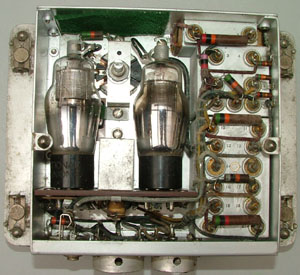
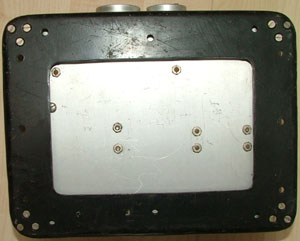
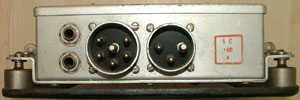 |
USAF Microphone
Amplifier (No 21 Pg 2 Rad)
Very early
example in very nice condition.
Dated: 08/12/40
Click on
pictures to enlarge
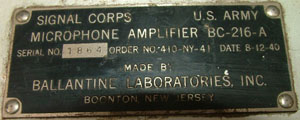

£350


|
|
Click on
pictures to enlarge
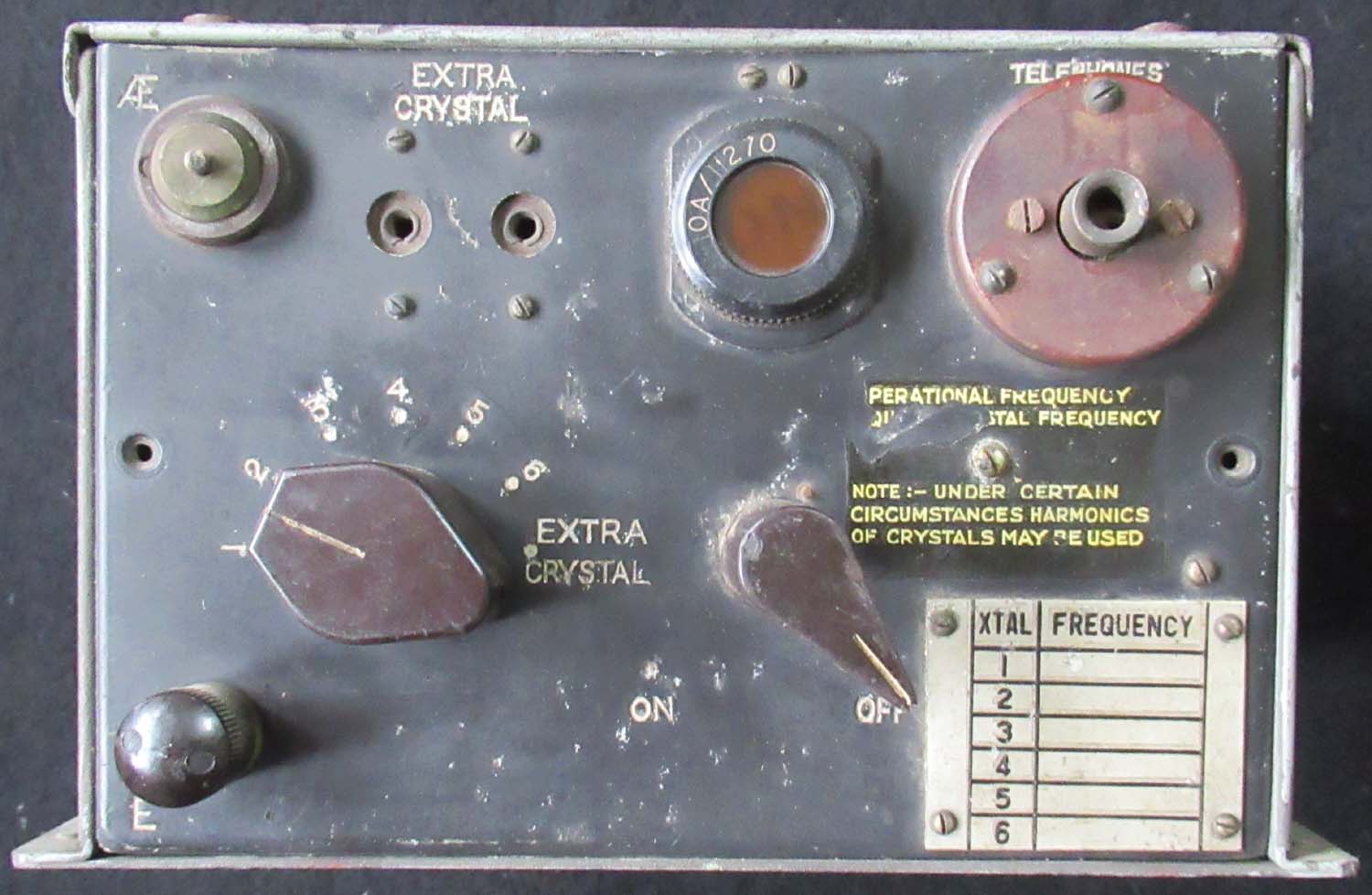



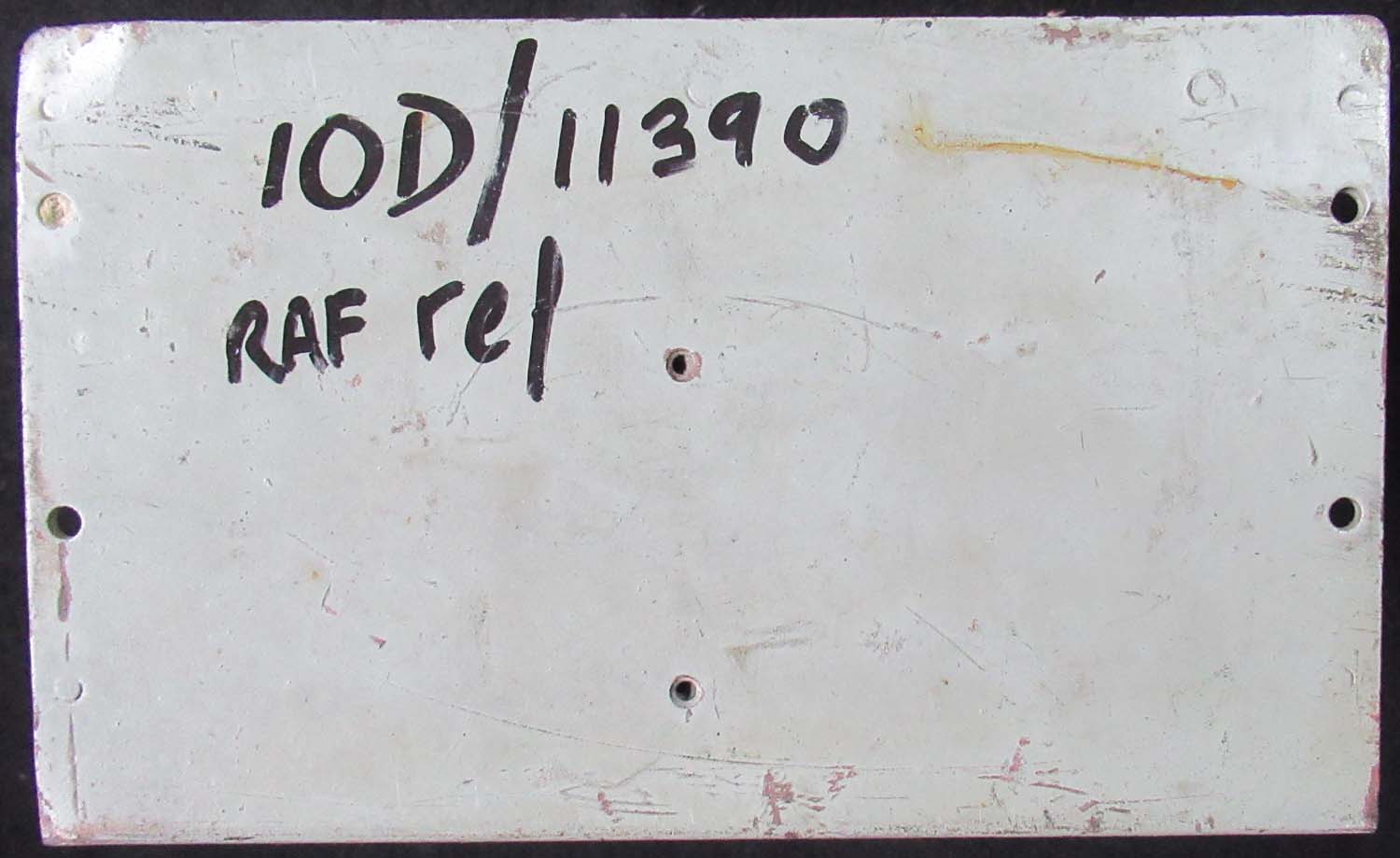 |
C 99 Radio
Crystal Monitor
(No 20 Pg 2 Rad) An opportunity to acquire
a rare Crystal Monitor Type 2, a useful piece of kit
designed for use in aircraft to facilitate the initial
adjustment and subsequent monitoring of CW transmitters and
receivers.
It enabled a rapid and accurate shift of
operational frequency to be made and a convenient method of
making the necessary adjustments for the correction of
frequency drift, which could occur during flight.
The
monitor operated any one of six spot frequencies in the
range from 7.5 m/cs to 1 m/c. 6 quartz crystals for the
appropriate frequencies are fitted in the monitor and a
seventh or extra position is provided on the panel of the
instrument. Any one of the crystals could be utilised by a
rotary switch on the front panel.
The monitor was powered
through the receiver's HT and LT batteries. Used in both the
T1083/R1082 and R1155/T1154 radio/wireless operators set-up.
These sets were introduced to the RAF
in the late 30's and early 1940's and would be used
in a wide range of operational aircraft throughout the war.
Amongst the photographs is an example of
the monitor in situ in a Wellington
set-up for illustration purposes. The set appears to be in
original condition and I found
no evidence of restoration.
AP 55609 Year 1944
10A/7396

Click on the
pictures to enlarge them
£395


|
|
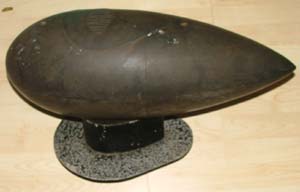
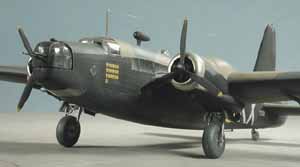
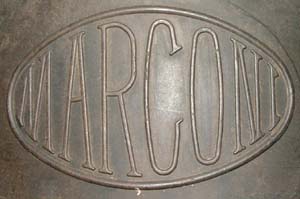



 |
Wellington Bomber D F Aerial and Control
Box
(No 19 Pg 2 Rad)
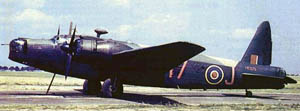
This DF aerial and control box, rate as one of the
rarest parts, you will see on this site. Made by the British
company Marconi, this Bako case and DF aerial was being used
operationally in 1939 and 40. It was fazed out shortly after
and replaced with another material. It was important that no
magnetic source was present. The unit was a radio compass
and helped the Wellington find its way to the target and
home again. The DF aerial rotates mechanically when the knob
on the control unit is turned. They are connected by a
Speedo type cable. I am hopefully collecting a cable shortly
and this will be included in the sale if it comes off. At
present the items for sale are as seen. The aerial can
clearly be seen fitted to the top fuselage just behind the
cockpit of the famous Wellington. A copy of a some technical
info will be sent with the item.
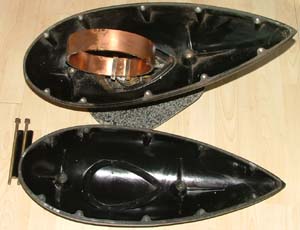
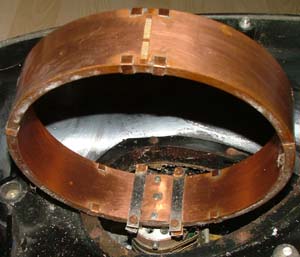
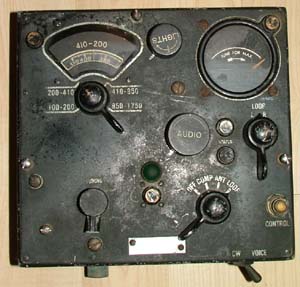
£850


Overseas buyers please
contact me for shipping
cost
|
|
Click on
pictures to enlarge
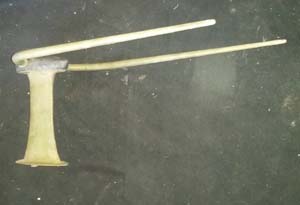


|
AN-100-A Antenna
(No 18 Pg 2 Rad)
The RC-103-A is
an airborne localizer receiver used to indicate a landing
course in conjunction with the AAF instrument approach
system. signals received from a transmitter, located at one
end of the runway to be used, are fed into the cross-pointer
indicator to indicate "on course", "fly right" or "fly
left". Audio indication is also provided.
The RC-103-A Components include Indicator 1-101-C, BC-732
Control box, BC-733 Receiver and the AN-100 Antenna
Antenna AN-100 is used when only the localizer receiver is
installed in the aircraft
This system was used in the DC-3 Dakota and the B17 Flying
Fortress as well as other USAAF Aircraft
The Aerial is in Good Condition with Original Paint and has
an Socket on bottom for connecting it into the Receiver
Seen Below on a C-47 Diagram

£295


Overseas buyers please
contact me for shipping
cost
|
|
Click on
pictures to enlarge
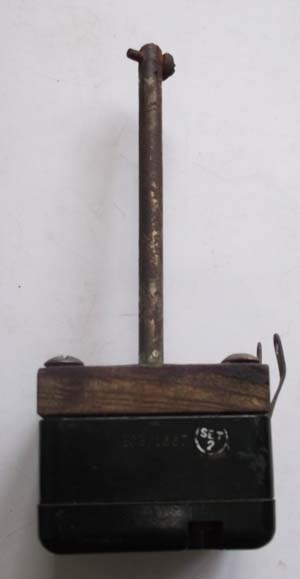
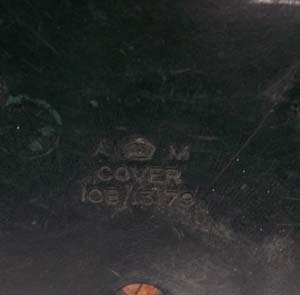 |
Base Unit for Whip Type Aerial
(No 17 Pg 2 Rad)
This Base Unit is Marked With Three Different Different
References
Ref: 10B/13178 for the Body
Ref: 10B/13179 for the Cover
Ref 10B/1667 for the Main Unit
Click on
pictures to enlarge
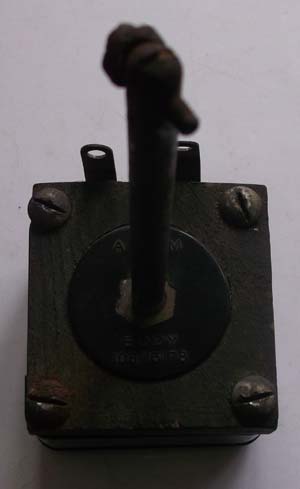
£125


|
|
Click on
picture to enlarge
 |
Wartime RAF Microphone
(No 16 Pg 2 Rad)
A really nice RAF wartime microphone with a heavy steel
base and column with a Bakelite top. Used by ground
controllers in the control tower to communicate with
aircraft.
Seen under a recreation of a wartime control tower
Ref A/M 10A/12052
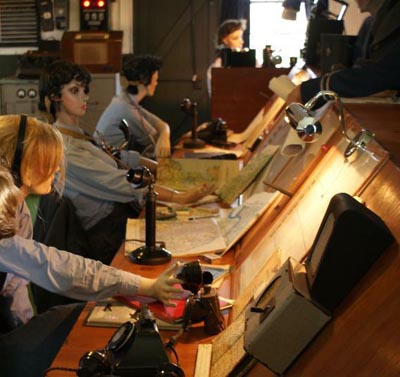
£95 each
Two available, one wired & one without. Sold
individually.


|
|
Click on
pictures to enlarge

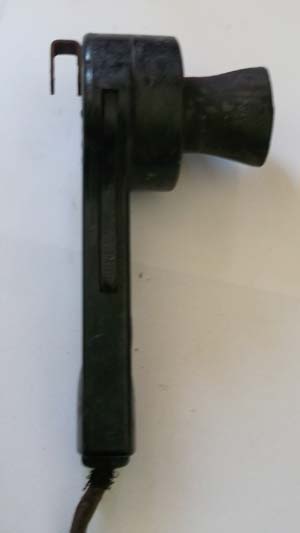 |
Wartime RAF Hand Held Microphone
(No 15 Pg 2 Rad)
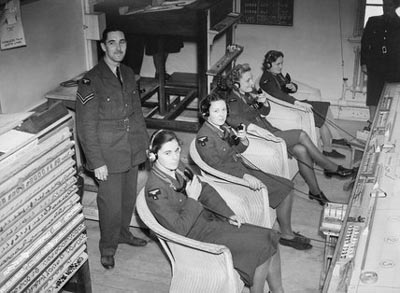
Seen above WAAF telephone operators in RAF Fighter
Command's Sector 'G' Operations Room at Duxford,
Cambridgeshire.
Receiving reports of enemy aircraft plots from Observer
Corps posts, September 1940.
£85


|
|
Click on
pictures to enlarge
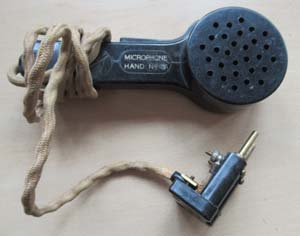
 |
Wartime RAF Hand Held Microphone 2
(No 14 Pg 2 Rad)
This one is in superb
condition complete with its plug and according to the
previous owner in working condition although i have not
tested it.

Seen above WAAF telephone operators in RAF Fighter
Command's Sector 'G' Operations Room at Duxford,
Cambridgeshire. Receiving reports of enemy aircraft plots from Observer
Corps posts, September 1940.
£105


|
|
Click on
pictures to enlarge

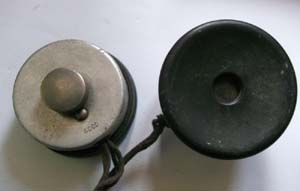 |
RAF Wartime Headset 2
(No 12 Pg 2 Rad)
A nice set of spare headphones used by RAF ground controllers
in WWII.
£55


|
|
Click on
pictures to enlarge

 |
RAF Wartime Headset 3
(No 11 Pg 2 Rad)
A nice set of spare headphones used by RAF ground controllers
in WWII.
£55


|
|
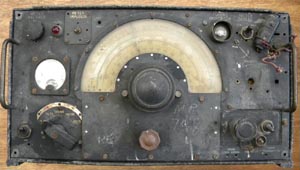
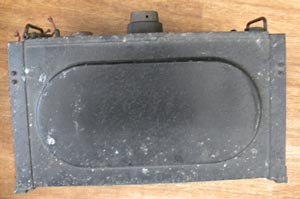
£250


Overseas buyers please
contact me for shipping
cost
|
R.1155 Radio Receiver
(No 9 Pg 2 Rad) The R1155 is an
English LF and HF superheterodyne receiver covering from
75kHz to 18.5mHz in 5 bands, with D/F (Direction Finding)
and homing functions. This receiver started development in
1939 by the Marconi Wireless Telegraph Co and was called the
AD.87B/8882B to replace the pre-war T1083 and R1082.
The R.A.F. designation was the R1155
and the corresponding transmitter was the T1154, the first
units being installed in June 1940. These were still
used into the 1950s. Several companies manufactured them,
including Marconi, Ekco, Plessy, Philips, and the Gramophone
Co. (EMI). They were fitted to many
aircraft like the Avro Lancaster and the deHavilland
Mosquito.

|
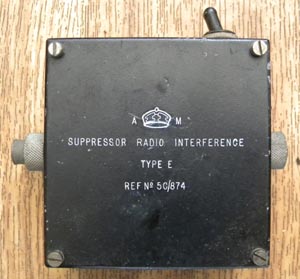 |
Type E Radio Suppressor
(No 8 Pg 2 Rad)
In excellent condition
appears serviceable. 5C/874
£65 each
Two available


|
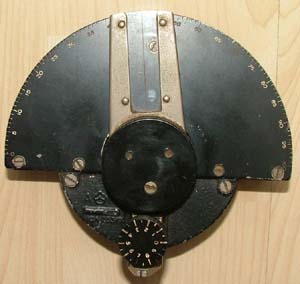 |
Radio Part (No 7
Pg 2 Rad)
Listed as radio equipment according to air
ministry part number reference.
A/M 10A/16319
Carry's Kings crown so pre 1944
See reference page three
for part number details
£55


|
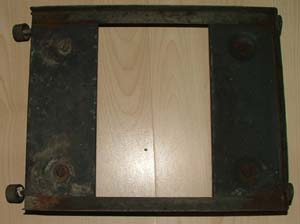
 |
Lancaster Radar/Radio Bracket
(No 6 Pg 2 Rad)

A/M 10AB Listed as misc radio/ Radar equipment see page three
reference
£65


|

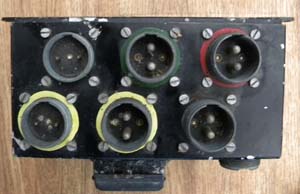
|
Radar Power Supply
Unit (No 4 Pg 2 Rad)
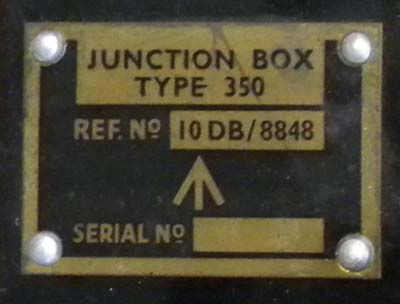
Radar power supply unit
in excellent condition.
£275


|
|
Click on
pictures to enlarge
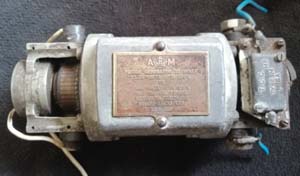
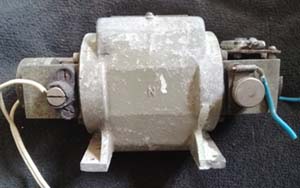

£125


Overseas buyers please
contact me for shipping
cost
|
Motor Generator A/M 10A/12009B
(No 3 Pg 2 Rad)
Here is a motor generator it
has a motor which runs on 24 bolts (standard for
bombers) which then spins a dynamo on the same shaft to
produce 480 volts.
The only thing that I
am aware used high voltage on bomber aircraft was radar
or Gee or other types of advanced navigation.
So most likely this
is its purpose. It has some damage to the mounting feet
and the motor casing at one end but it spins
freely and I see no reason why it should not work after
a good clean.
Click on
picture to enlarge
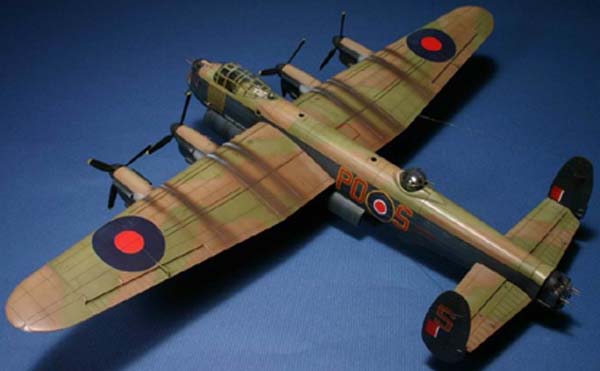 
Motor Generator 20 Watt
23-24 Volts 1.8 amps to 480 Volts 0.04
Amps Ref No 10A/12009B Serial number 9252
Joseph Lucas LTD
England
|
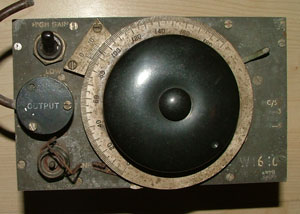

£250


|
Air Ministry Wavemeter W1646
(No 2 Pg 2 Rad)
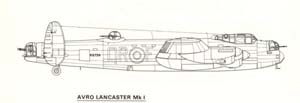
A/M Ref:
10T/6040.
These were used onboard Lancaster
Bombers to check the Radar Transmitter frequency. A bit
rough outside, although should clean up Vernier dial looks
good and legible . Inside all components are in very good
condition.
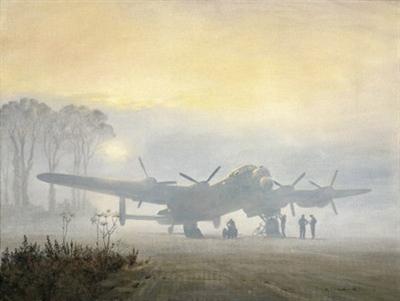
|

Click on
picture's to enlarge

|
Spitfire Remote contactor control box (Pg2 Rad)

Remote contactor IFF system
control box. Fitted to Spitfire's as well as other aircraft.
The unit transmitted a signal
for 15 seconds out of every minute thus identifying this
aircraft as friendly to the radar operators below.
This enabled
fighter command controllers to vector Fighters on to the enemy with
two distinct plots
. The control box has a clockwork
mechanism and plugs into the remote contactor below.
The
control boxes are much harder to find than the remote
contactor.
This has the
refrenece:10A/10994
Click
Here to see this on the Instruments Page |
|
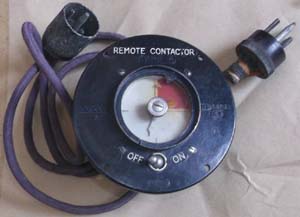
Click on the
pictures to enlarge them
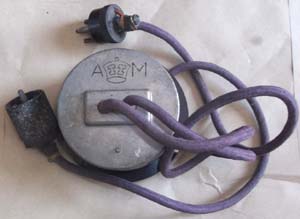
|
Remote
Contactor (pg2 rad)

Remote contactor IFF system.
(Identification Friend or Foe) Spitfires had these fitted to
the top RHS of the cockpit. The unit transmitted a signal
for 15 secs out of every minute thus identifying this
aircraft as friendly to the radar operators below. This enabled
controllers to identify friend aircraft. This is in mint unused condition in its
original box. This is the 24 volt version.
Click Here to see this on the Instruments Page |
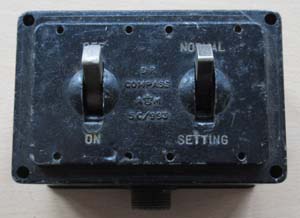
Click on the
picture's to enlarge. |
Lancaster DF Compass switch (pg2 Rad)
An original and very rare item.
This is the correct switch for the DF Compass fitted to
Lancaster's. This switch is situated on the lower left of
the main instrument panel in the Lancaster.
A/M 5C/993
Out of stock more wanted
contact me |
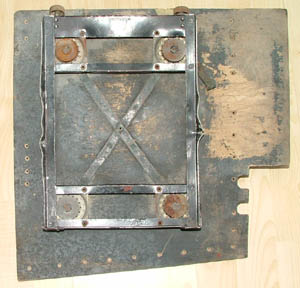
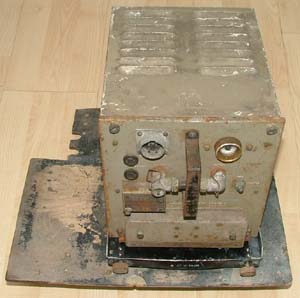 |
Mounting Bracket
(No 22 Pg 2 Rad)
Used in heavy bombers to mount radio and
radar equipment. The power unit fits like a glove with rear
locking pins. Attached to original wooden base.
A/M 10AJ/82
See reference page three
for part number details
Tray only
Out of stock more wanted
contact me
|
|
Click on
pictures to enlarge
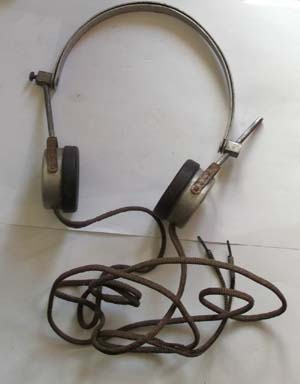
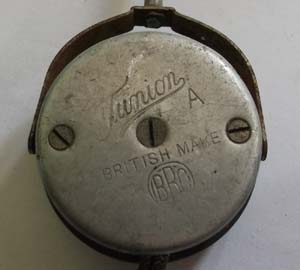 |
RAF Wartime Headset 1
(No 13 Pg 2 Rad)
A nice set of headphones used by RAF ground controllers
in WWII.
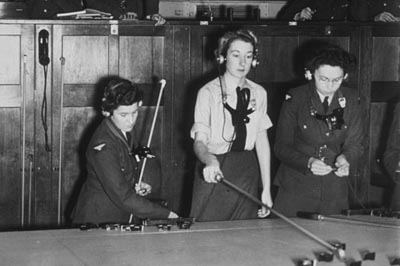
Out of stock more wanted
contact me
|
|
Click on
pictures to enlarge
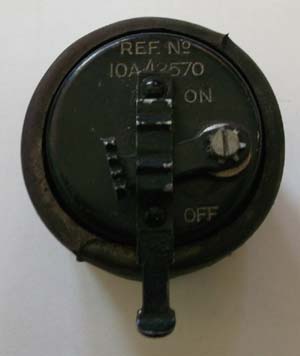
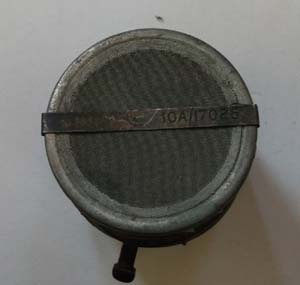 |
Oxygen Mask Microphone
(No 10 Pg 2 Rad)
This is a microphone used in RAF Pilots and aircrew
oxygen mask's during WWII
Out of stock more wanted
contact me
|

 |
Radio/ Radar Power Unit (pg 2 rad)
Believed to be wartime - a power unit
fitted to the heavy bombers of the RAF to supply radar/radio
systems - possibly H2S or Gee ? Air Ministry
Section/Reference no. 10DB/16072 (10DB being the section for
radio/radar power units) AM serial 99 , Type 707 , size 9 x
8 x 11inch deep . Appears to be in good condition
inside .
Out of
stock more wanted please
contact me
|
|
Click on the
pictures to enlarge them.
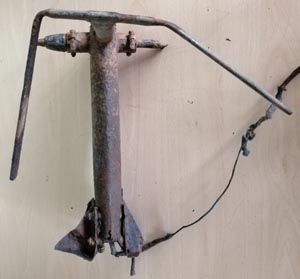
Click on the
pictures to enlarge them.
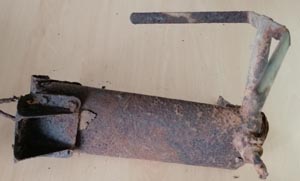
 |
Rebecca Aerial Lancaster/Beaufighter (pg2 rad)
An extremely rare Rebecca Yagi aerial in very rough
condition please see the pictures . Most likely its come
from a crash sight but the history is long gone. designed to be mounted with an accompanying
identical but handed aerial on the nose of the carrying
aircraft. This item was undoubtedly carried and saw service
with an RAF aircraft and is of the design used by Bristol Beaufighters as well as Lancasters as shown by the paxolin screens which were incorporated to prevent propeller
modulation interference and give a measure of torsion
rigidity.
Rebecca / Eureka is a simple system
designed initially at the behest of SOE to assist in the
delivery of supplies to the Army, and Resistance Partisan
groups in occupied Europe and came into use during 1943.
Later, the system expanded into blind homing and approach
aid for aircraft. . It consisted of two parts, the Rebecca
airborne transceiver and antenna system, and the Eureka
ground-based transponder.
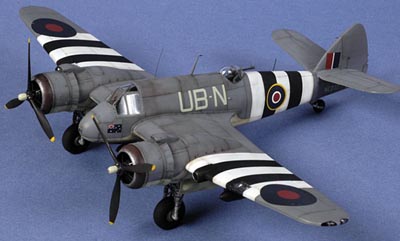
The Rebecca code name was derived from the
phrase "recognition of beacons". Rebecca calculated the
range to the Eureka based on the timing of the return
signals, and its relative position using a highly
directional antenna. The airborne Rebecca interrogator
transmitted a 4-5 μsec long pulse at a rate of 300 pulses
per second on a frequency between 170 and 234 MHz. Upon
receiving this signal, the Eureka rebroadcast the pulses on
a different frequency. The Eureka unit also included a
keying system that periodically lengthened the pulses over a
period of seconds, allowing a Morse code signal to be sent
for station identification.
This rebroadcast signal was received by two
directional yagi antennas on the aircraft carrying the
Rebecca unit. The signal was then sent to a conventional ASV
radar display, with the vertical axis measuring time (and
thus distance) and the horizontal showing the strength of
the signal. If the aircraft was approaching the Eureka from
the side, the horizontal pulse would extend further on one
side of the display than the other, indicating the need for
the aircraft to turn toward the shorter blip in order to fly
directly toward the Eureka.
Out of stock more wanted please
contact me
|
|
Click on the
picture's to enlarge them
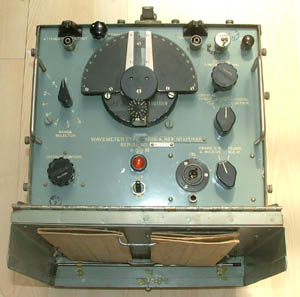
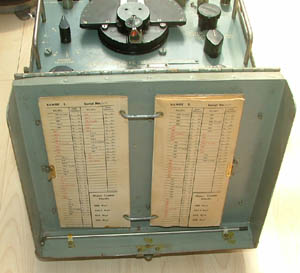
 |
Lancaster Wavemeter Countermeasure (Pg2 Rad) This is
an extremely rare item and its unlikely you will see one of
these available again. It's in superb original condition and
totally complete. It was fitted to Lancaster's and other
heavy wartime bombers including the USAF B17's. Nicely
marked with the Kings airministry crown. It was used
to counter enemy radar. See in situ in
a B17 under.
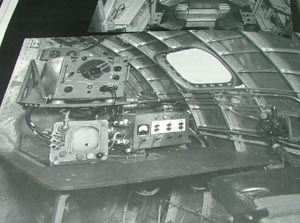
Type W1191A A/M
10T/565
Other special equipment
utilized in the Gremlin's bag-of-tricks were powerful
electronic jammers. These devices had unusual nicknames like
Mandrel, Dina, Jackal, Jostle, and others. Mandrel, for
example, was an airborne transmitter tuned to radiate noise
over the enemy radar frequencies. This disturbance tended to
obscure the size of Allied attacking forces on the enemy's
radar screens and also caused the enemy to conclude an
attack was imminent when one was not. Another airborne
electronic jammer, nicknamed Jackal, was used to jam the
German tank communications during the Battle of the Bulge in
the winter of 1944-45. Many of the aircraft jamming systems
were developed and tested by Allied scientists associated
with the American-British Laboratory Division 15 (ABL-15).
They were part of the British Telecommunications Research
Establishment located at Great Malvern.
Out of stock more wanted
contact me
|
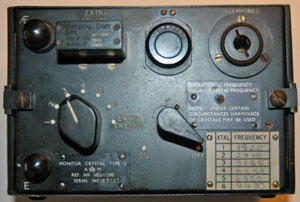


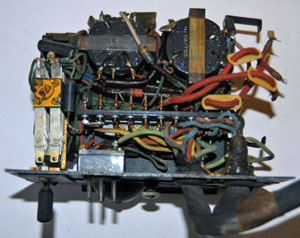 |
R1082 R1155 WW2 RADIO RAF BOMBER MONITOR (Pg2 Rad)

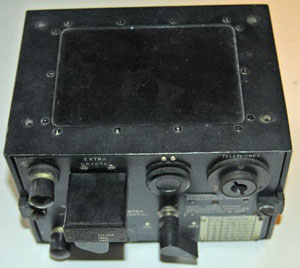
An opportunity to acquire
a rare Crystal Monitor Type 2, a useful piece of kit
designed for use in aircraft to facilitate the initial
adjustment and subsequent monitoring of CW transmitters and
receivers. It enabled a rapid and accurate shift of
operational frequency to be made and a convenient method of
making the necessary adjustments for the correction of
frequency drift, which could occur during flight. The
monitor operated any one of six spot frequencies in the
range from 7.5 m/cs to 1 m/c. 6 quartz crystals for the
appropriate frequencies are fitted in the monitor and a
seventh or extra position is provided on the panel of the
instrument. Any one of the crystals could be utilised by a
rotary switch on the front panel. The monitor was powered
through the receiver's HT and LT batteries. Used in both the
T1083/R1082 and R1155/T1154 radio/wireless operators set-up.
These sets were introduced to the RAF
in the late 30's and early 1940's and would be used
in a wide range of operational aircraft throughout the war.
Amongst the photographs is an example of
the monitor in situ in a Wellington
set-up for illustration purposes. The approximate dimensions
of the unit are approximately Width 180mm x H110 mm x Depth
125mm. The cabling and plugs illustrated are included. It
weighs less than a Kilogramme. The set appears to be in
original condition and I found
no evidence of restoration.
Out of stock more wanted
contact me
|
|
|
1
2 3
4
 |
